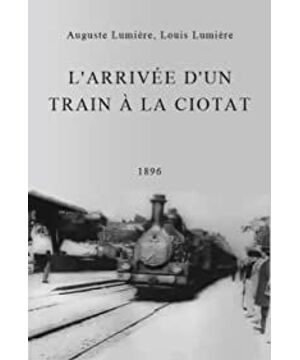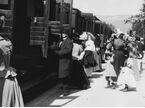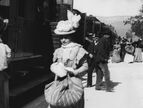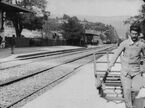00'00″ appears at about 1 hour and 05 minutes of the film. All passengers who get off the bus, without exception, all go out of the mirror to the left, the purpose is to try to hide the
penetration caused by the reflection of the bus door glass. 00'15″ The protagonist leaves the platform, and there is exactly one The female passenger passed by behind him. At this time, another bus approached from the left. The bus passed by a column on the platform and then walked behind the protagonist. The angle at this moment can perfectly cover the bus glass that would cause piercing. The mirror reflection on the door, and then the bus went to the right, the female passenger and her boyfriend met and hugged, again perfectly covering the terrible reflection. After the bus comes out from the right, the camera pans to the left, and another bus approaches. The hero turns his head and looks around, stepping across the road quickly. The position and driving angle of the bus can ensure that the front windshield does not reflect any camera. The picture taken.
00'28″The protagonist walks to the waiting room, and there is a stalker on the nearby column. At this time, the camera should move to the left horizontally and focus on the nearby so that the stalker can be seen clearly. However, there is a little rush here. It’s a bit slow for half a shot, a little bit out of focus close up, and the lens moves a little bit faster, but the director’s arrangement is not ruled out, because the fast focus shift is not too technically difficult on modern equipment. After that, the hero passes through a large glass door. In the waiting room, this lens is very terrible. The lens is in the distance. However, when the lens is panned to the left, the reflection on the large glass door is bound to be seen. However, a miracle happened. A lady with a backpack just went out to complete this perfect The camera pans to the left. Then the protagonist enters the waiting room, but there is glass between the two deadly compartments in the waiting room. The director is very clever. He made tricks in the scene on the left because the camera never moved to the left again. With a slight movement, it can be inferred that the invisible area on the left has a little fill light to reflect the feeling of natural glass, and all other lights are blocked, or there is a black cloth covering all the scenery in the entire middle and lower area. The result was that the glass reflection almost disappeared, but at the moment when the protagonist, the glass and the camera were approaching, the director arranged for two passengers to walk by for the sake of safety, but at this time, the reflection in the glass was almost insignificant. Afterwards, the protagonist I have to take a big step out of the waiting room door. The door is of course glass, but the direction facing the camera is almost backlit, so there is nothing to worry about, and there will never be any reflections that can be seen.
00'46″The protagonist goes out and looks up at the sky and sees an airplane flying by. At this time, the camera makes a 90-degree arc movement, but it is actually an arc movement with a larger moving arc radius, with a slight elevation angle. When the photographer changed the focus, yes, it is a zoom and moving lens (Trans-Trav) to ensure that the right pan after a big retreat is avoided, and the camera is facing the glass door of the waiting room, and then the camera pans right. When a Zoom was pulled to the middle shot, of course, the safety-first director arranged for a passenger to walk to the waiting room to slightly cover the glass door, but from a perspective, it is completely impossible to see the reflection of the penetrating through the glass door at this time.
00'56″ The protagonist walks to the right and the camera pans to the left at the same time. At this time, there will be a stalker behind the close-up stone pillar, but this time the focus is simply impeccable, and the time control is very precise. It can be determined by combining the previous situation. The camera must be completely controlled manually by the photographer without any programming.
01'02″ At the far end of the screen where the protagonist passed by, some young people gathered. At this time, there was a quick Zoom zoom in. Of course, the focus was also needed at this time. These young people played a role in saving the image in case of loss of focus.
01'05″ The protagonist turned his head back, the photographer quickly circled the protagonist again and made a 90-degree orbit, and then the camera moved back, then turned left (backward), in short, followed the protagonist closely, the synchronization is quite good. The protagonist in the single frame is quite clear.
01'21″ On the other hand, a car honked its whistle and passed by. The protagonist turned his head and looked to take the audience's attention away. Because the photographer is going to get on the elevator, the picture may be a little unstable, but this is worth worshiping. The lens is very stable. If it is not for the sudden raising of the lens, it is difficult to find that the protagonist and the photographer have been on the elevator together. After that, you can find that the orange tiles on the right end of the screen are completely matte. There are two possibilities: one, luck meets someone The old subway station tiles are not very bright; second, the film crew sprayed a lot of hair spray in advance. Of course, I prefer the latter, and it is all the tiles inside the subway station, because afterwards there will be a large tile of tiles, completely completely The high matte state of the escalator is almost invisible to the reflection of the top lighting. If it is, then the amount of work is huge. At least 50 bottles of hairspray are used, because the inside of the passageway down the escalator is almost impossible to do from the lighting. Possibly, the headlights at the top have unobstructed views, and the vertical space is narrow. Although there are many stone pillars inside, it is still relatively open, so it should be a good overall scene designed by the photographer.
02'07″ After the audience stunned, the fight started. The fight is still in the middle and close shots with panoramic views, and the interior is unobstructed. It is estimated that there will be at least three directors and assistants behind the photographer's butt, and it is very likely from the beginning. Just follow forcefully. Recording is probably impossible at this time, so now recall the previous scenes and shots, how powerful this three-person team without a radio engineer is, plus a strong post-recording team, otherwise this section is life and death. There can be no sound. After that, I won’t talk about the rhythm control of this fight. It is already strong enough. At this time, the rhythm of action design is not enough in the face of powerful scene scheduling.
In the end, the shot of the flying knife inserting the person ended perfectly, and the protagonist who had finished catching the turtle in the urn ran out again in the same direction that he came in.
View more about The Arrival of a Train reviews






